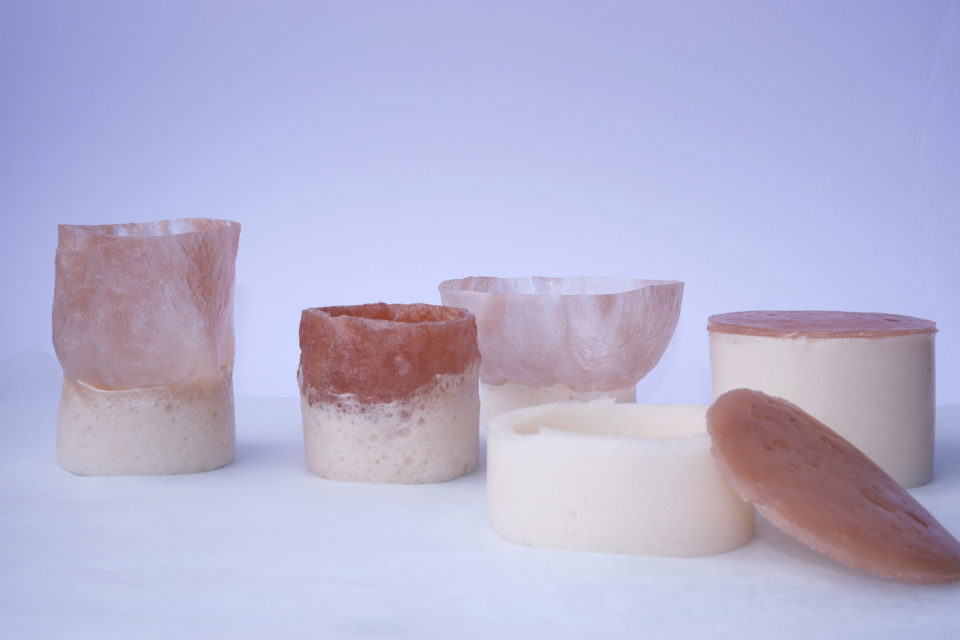Bioplastic based on aquafaba from chickpeas. (Credit: Materialdistrict.com)
Aquafaba is the viscous water in which legume sees have been cooked. According to an article on Materialdistrict.com the substance is a by-product from the preparation of legumes and, depending on the legume, can have emulsifying, foaming, binding, gelatinising, and thickening properties.
For her purposes, Nerlich picked the aquafaba from chickpeas. The liquid is mixed with other ingredients and cooked, before it is shaped in the desired form. Currently, the shaping is done by hand, but according to Nerlich, the material shows great potential for mechanical manufacturing and thus industrial production, or even 3D printing.
The bioplastic is naturally light pink to terracotta coloured, depending on the density and thickness, but can be coloured with natural or food colourings. The structure can be flexible or hard, again depending on the density and thickness. The bioplastic is completely vegan and biodegradable.
Nerlich used the material to make tableware, which she combined with off-white vegan foam, also based on aquafaba from chickpeas. The foam, medium hard with a spongy flexibility, is moulded and can therefore also be applied in industrial production.
“The temporary nature of biodegradable biomaterials remind us of the flow of nature and lets us value the quality of impermanence,” Nerlich says. “The transitoriness of the materials has the potential to create more value of the end product, whilst also emphasising the circular nature of the material.”
Currently, Nerlich is looking for industrial collaborators to develop a manufacturing process further.










